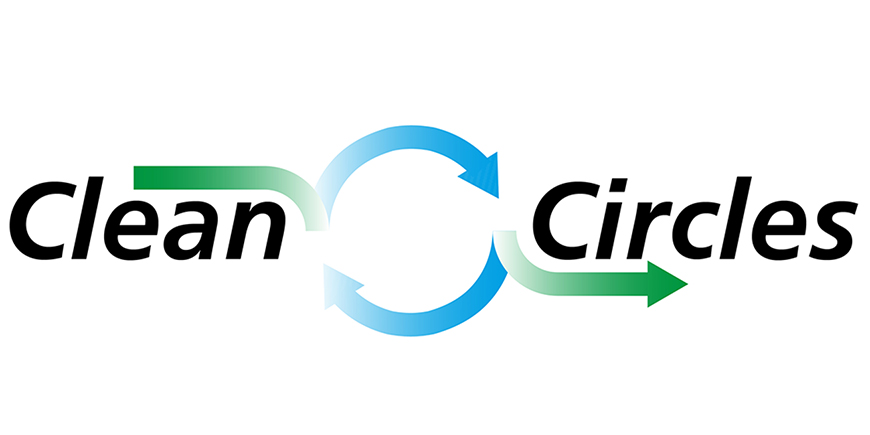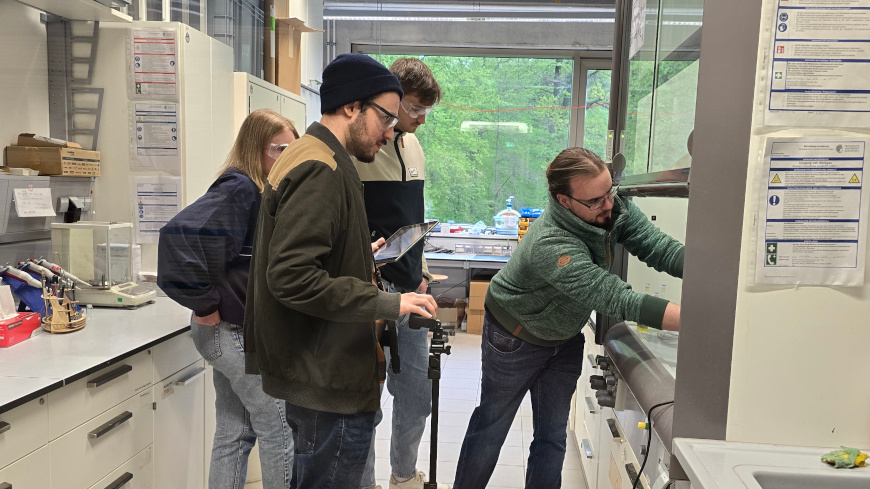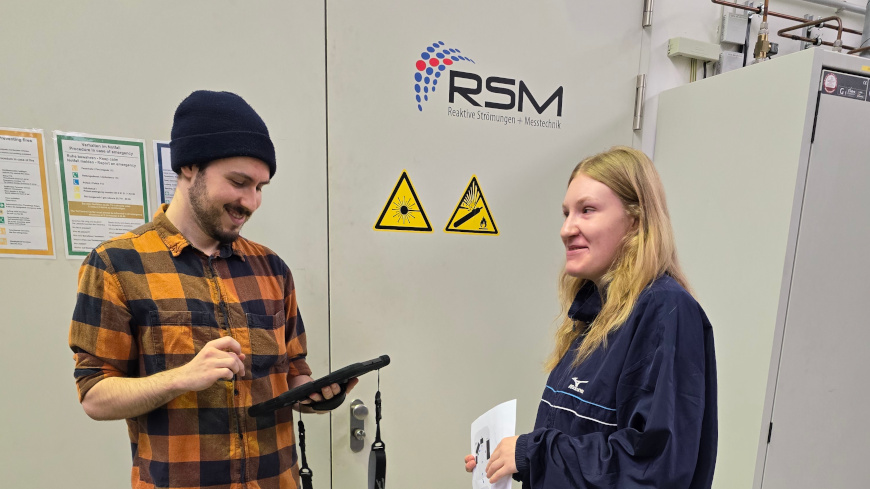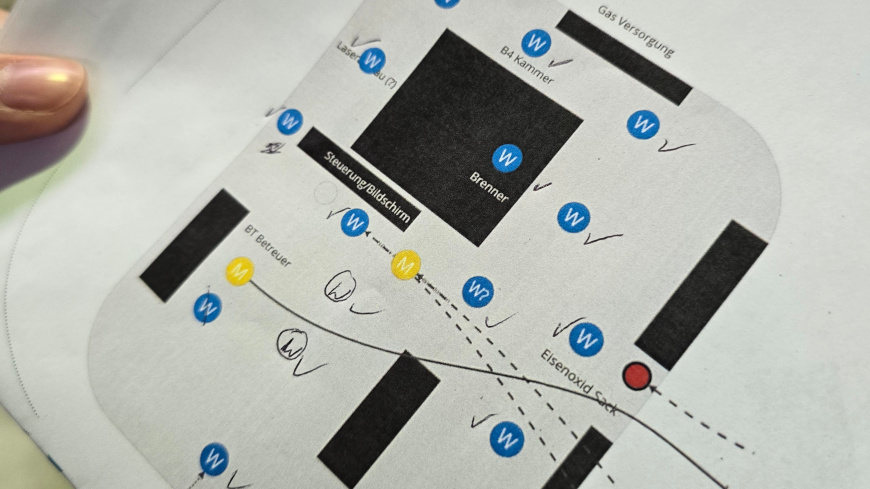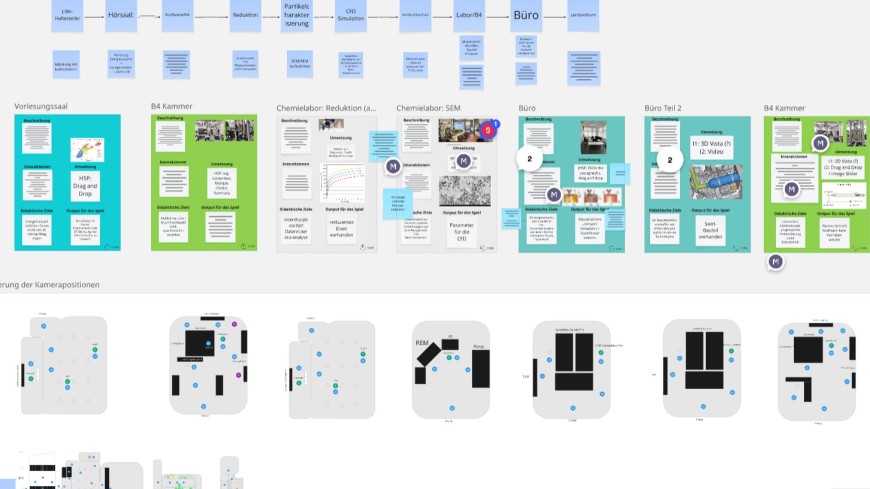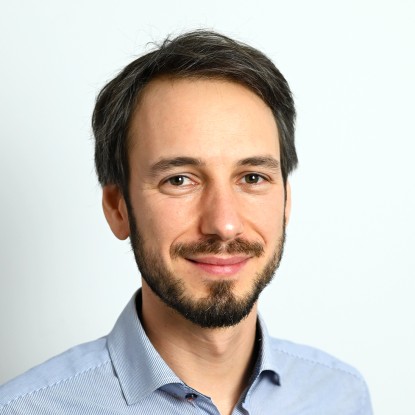Between Research and Storyboard
The Making of a Serious Game about the Energy Carriers of Tomorrow
2025/07/03 by ms
How do you tell the story of research and studying in a way that feels like an adventure? That question marked the beginning of a side project that would lead us far beyond our usual roles: into voice acting, video editing, music direction, storyboarding, dialogue writing, game and puzzle design, and even the visual styling of virtual worlds.
A team comes together
In the summer of 2023, Franziska Ritter from the Central Student Advisory Office approached Elena Dröge, communications officer of the Department of Mechanical Engineering, with an unusual idea: high school students should be able to explore the university and its degree programmes through interactive 360° panoramas, playfully and engaging.
The thematic focus was quickly set: the energy transition and sustainability. That made Clean Circles the natural overarching topic. This is where we joined the project: Marius Schmidt, managing director of Clean Circles, PhD student Sören Dübal, and student assistant Lisa Engelhardt. The interdisciplinary team was completed by Markus Weber and Felix Hoch from fuels – Future Learning Spaces, a project at TUDa's Center for Educational Development and Technology.
From concept to experience: a playable escape game
It was clear from the start: We don't want to dress up a lecture as a game. We wanted a narrative, interactive experience – an escape room adventure that brings together technology, sustainability and science in a way that’s both accessible and compelling.
Early on, a central plotline emerged: an artificial intelligence threatens to undo the progress made in Europe’s energy transition and only the players can intervene. (The motives of the AI, however, will not be revealed here but at the end of the game.)
But what content can be told in this form? What makes a good puzzle? And how do you keep the attention of students who are immersed in rich digital worlds every day?
As our planning meetings progressed, it became clear how ambitious the goal really was. We drew our ideas for challenges and game mechanics directly from real research: from chemical analyses and flame experiments to numerical simulations and the systems integration of iron as a renewable energy carrier.
But concept and content are only half the challenge, the technical implementation is the other. We frequently encountered limitations in the software stack we used: the base platform was 3DVista, enabling 360° panoramic navigation, while interactive puzzles were built in H5P, a tool also used on platforms like Moodle. The two systems run largely independently, a structural hurdle we had to work around with creative solutions. For example, some puzzles require users to enter code words to bridge the missing interface between puzzle logic and game progress.
New roles, new tools
Once the dialogues were written, it was time to step up to the microphone. Several team members became voice actors for the first time, experimenting with tone, expression, and the fine line between natural delivery and professional clarity. Some aspects were voiced using AI-generated voices, as improved tools became available over the course of the development and proved to be surprisingly effective.
And the game needed an engaging start. For the intro and outro sequences, we filmed drone footage at the TU Darmstadt Lichtwiese campus. With support from the FSR institute, we used both stabilised overhead shots and fast-moving first-person drone views to create a cinematic opening and closing.
The release
As the project developed, so did our respect for the limits of time, technology and resources. Enthusiasm alone was not enough: We had to prioritise. Not every idea made it into the final version of the game.
An early round of user testing with students and doctoral researchers proved essential. Their feedback helped us identify blind spots and significantly improved the gameplay experience.
In April 2025, the time had come: the Escape Game went online and is playable in all common browsers. Did we succeed in creating an experience that is both entertaining and informative – one that opens a meaningful window into academic life and energy research at TU Darmstadt, in the Department of Mechanical Engineering and the Clean Circles project?
Decide for yourself: Play the Mechanical Engineering Escape Game (German) – whether you are interested in studying or simply want to take a curious to peek behind the scenes of science and energy research.
Developed as part of the TUDa Campus Quests series, the game guides players through laboratories, offices, and lecture halls of TU Darmstadt using immersive 360° panoramas — a kind of “Google Street View on steroids.”
Its goal is to offer an insight into the interdisciplinary world of energy research and mechanical engineering, accompanied by dialogue-based storytelling, interactive puzzles, and a mysterious threat lurking beneath the surface.
The content is based on real academic material and topics from the research project Clean Circles – Metals as Carriers of Renewable Energy, bridging study orientation with science communication.
- Duration: 20-40 Minutes
- Plattform: Browser based
- Technical requirements: A sufficiently large screen (PC, laptop, tablet) and sound output is recommended.
